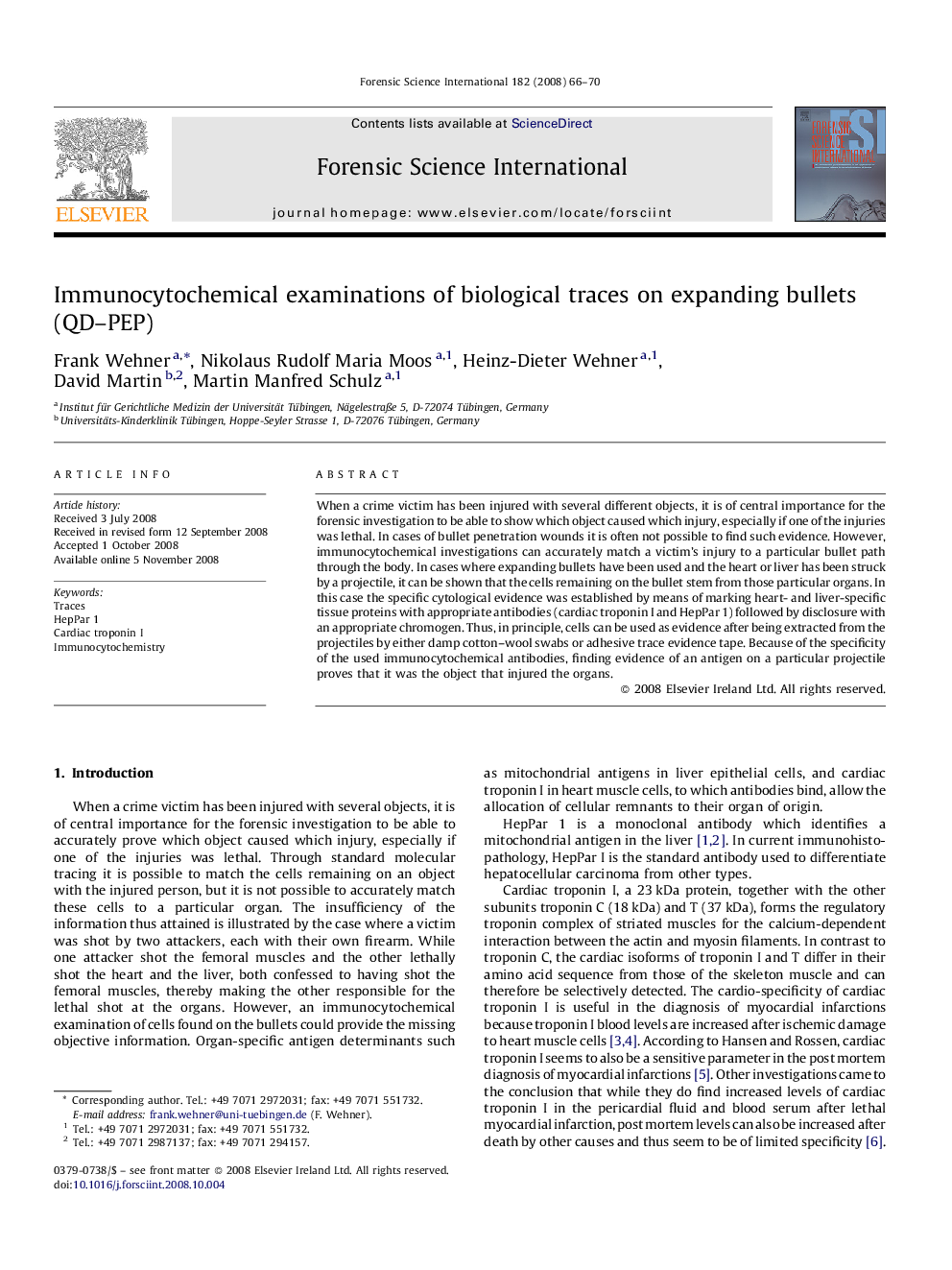| کد مقاله | کد نشریه | سال انتشار | مقاله انگلیسی | نسخه تمام متن |
|---|---|---|---|---|
| 97434 | 160493 | 2008 | 5 صفحه PDF | دانلود رایگان |

When a crime victim has been injured with several different objects, it is of central importance for the forensic investigation to be able to show which object caused which injury, especially if one of the injuries was lethal. In cases of bullet penetration wounds it is often not possible to find such evidence. However, immunocytochemical investigations can accurately match a victim's injury to a particular bullet path through the body. In cases where expanding bullets have been used and the heart or liver has been struck by a projectile, it can be shown that the cells remaining on the bullet stem from those particular organs. In this case the specific cytological evidence was established by means of marking heart- and liver-specific tissue proteins with appropriate antibodies (cardiac troponin I and HepPar 1) followed by disclosure with an appropriate chromogen. Thus, in principle, cells can be used as evidence after being extracted from the projectiles by either damp cotton–wool swabs or adhesive trace evidence tape. Because of the specificity of the used immunocytochemical antibodies, finding evidence of an antigen on a particular projectile proves that it was the object that injured the organs.
Journal: Forensic Science International - Volume 182, Issues 1–3, 20 November 2008, Pages 66–70